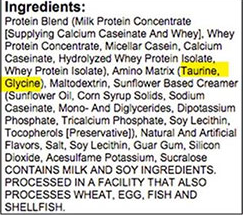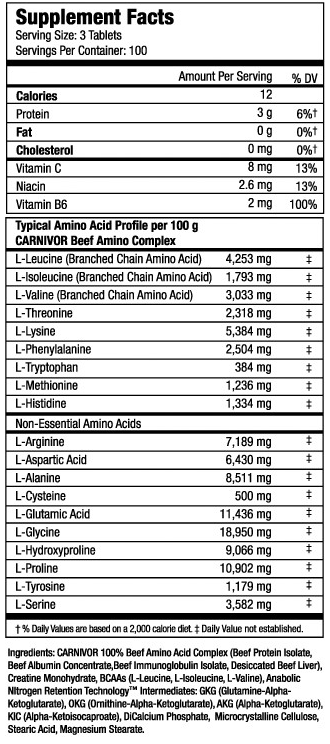What is Amino Spiking in your protein shake?
In 2014 came out that many supplement companies use Amino spiking in their protein shake products. This new phenomenon is most likely due to the rising whey protein prices of recent years and competition between companies. An additional problem to the measurement on dry matter and the adding of excessive flavorings.
Cheap amino acids such as glycine and taurine are added to protein products in order to increase the nitrogen content, and in this way fictitious the protein percentage. Often these additional amino acids are not listed on the label. The addition of creatine and other nitrogen-containing substances are also used to increase the nitrogen content, and thus the protein percentage -> More information
Sometimes it is easy to detect amino spiking. Some companies just place it on the ingrediënts list because most consumers don't know this effects there protein content (example). So always watch that ingrediënts list for added amino acids, but also for creatine and cheaper protein scources.

Amino acids and detection
When these added nitrogen-containing substances are not declared on the label, then we have the amino acid analysis to detect this. Glycine, alanine and taurine are the most common amino acids to be added. The reason for this is that they are relatively inexpensive in contrast to other amino acids and whey itself. Ultimately it is done to reduce the cost price and provide your own whey cheaper than the competition.
Addition of one of these individual amino acids can be fairly easily detected, as we have seen in the amino acid analyzes posted on Bodybuilding.nl-> Example of amino spiking
In the US are already several lawsuits against these unscrupulous affairs
Is your protein really protein?
Lawsuits Say Protein Powders Lack Protein, Ripping Off Athletes
Beef Protein
Money-hungry manufacturers have now created a new thing. What really is in it is not meat or proteins from it, but collagen hydrolysate. This is made from animal-derived (usually pigs or cows) skin, tendons or bones. But this is also a protein of animal origin. This allows the manufacturer to call it Beef Protein (or in other words, protein from beef). Various amino acids are also added in order to achieve a higher protein content and to create a more discrete amino acid profile. Whit a nitrogen analysis you will not see this and earn a lot of money on the backs of the consumer.
On the basis of the composition below in the table, we can figure out with an amino acid analysis if this is the case. Collagen and meat have a completely different amino acid profile which can't be fully corrected with individual amino acids. This can also be added to whey again, then you have to watch for a high value of Glycine especially, but also alanine, proline and hydroxyproline. On label it is usually already clear when the (correct) amino acid profile is indicated.
The table shows a comparison between the amino acids in collagen and meat.
Amino acids
Collagen
Meat
Glycine
32,9 %
6,26 %
Proline
12,6 %
4,90 %
Alanine
10,9 %
6,25 %
Hydroxyproline
9,5 %
1,08 %
Glutaminezuur
7,4 %
15,43 %
Arginine
4,9 %
6,65 %
Asparginezuur
4,7 %
9,36 %
Serine
3,6 %
4,05 %
Lysine
2,9 %
8,68 %
Leucine
2,4 %
8,18 %
Valine
2,2 %
5,10 %
Threonine
1,9 %
4,11 %
Phenylalanine
1,3 %
4,06 %
Isoleucine
1,1 %
4,67 %
Hydroxylysine
0,6 %
0 %
Methionine
0,6 %
2,68 %
Histidine
0,5 %
3,28 %
Tyrosine
0,3 %
3,27 %
Cysteine
0,1 %
1,33 %
Tryptofaan
0 %
0,67 %
With this example (carnivor beef protein) we can see that Glycine, alanine and proline are to high. And also hydroxyproline, that is only this high in collagen. On the ingrediënts list you will find added amino acids what is used to compensate for the bad amino acid profile. But that is very difficult to do with collagen as you can see.


